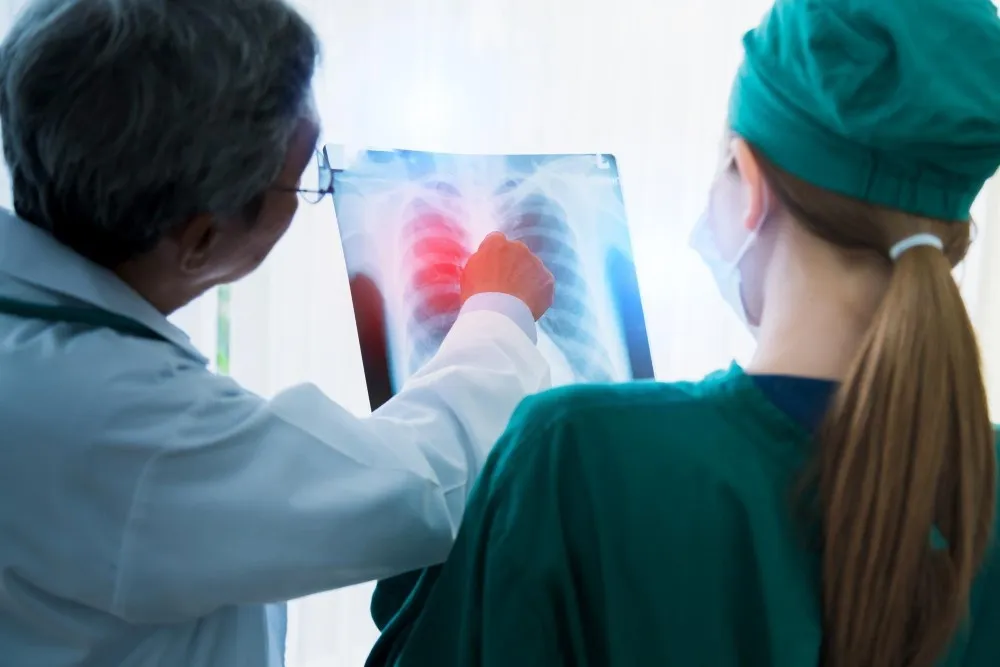Did you ever think about this simple question? It is strangely true. Passive smoking is more harmful than smoking, as it causes various health issues. To know more about this, let us get a deep insight into passive smoking. Let us also understand the dangerous effects of passive smoking.
ReferencesSasco A.J., Secretan M.B., Straif K. Tobacco smoking, and cancer: A brief review of recent epidemiological evidence. Lung Cancer. 2004;45(Suppl. 2): S3-S9.The Dangers of Secondhand Smoke (https://www.healthychildren.org/English/health-issues/conditions/tobacco/Pages/Dangers-of-Secondhand-Smoke.aspx). Assessed on 29th July 2019The Harmful Effects of Second-hand Smoke (https://www.healthlinkbc.ca/healthlinkbc-files/second-hand-smoke).Assessed on 30th July 2019 Why passive smoking is worse than smoking (https://www.hindustantimes.com/health-and-fitness/why-passive-smoking-is-worse-than-smoking/story-OEi31jnnv5BVlGKYKQUhzK.html) Assessed on 30th July 2019 What is Smoking?
Smoking is a practice in which a substance is burned and the resulting smoke is taken in, to be tasted and absorbed into the bloodstream. It is the inhalation of the smoke of burning tobacco which is encased in cigarettes, pipes, and cigars.What is Passive Smoking?
Passive smoking is the inhalation of smoke, or environmental tobacco smoke, by persons other than the intended "active" smoker. It is also called second-hand smoking It is the involuntary inhaling of smoke from other people's cigarettes, cigars, or pipes. Global scenario of passive smoking The global tobacco epidemic kills nearly six million people each year, of which more than 6,00,000 are non-smokers. They are dying from breathing second-hand smoke. This means that non-smokers constitute one out of every 10 tobacco-related deaths.Types of Passive Smoking
- Mainstream smoke (MSM): The term mainstream smoke refers to the smoke exhaled by a smoker.
- Sidestream smoke (SSM): The term side stream smoke refers to the smoke that is released from the end of a cigarette, cigar, pipe, hookah pipe, or joint, and accounts for roughly 85% of secondhand smoke exposure. SSM exhibits a greater risk than MSM. Not only does it contain greater amounts of carcinogens and toxins, but it also persists for a longer period in the body.
What are the negative effects of passive smoking?
- Lung cancer: It increases a non-smoker's risk of getting lung cancer and may also increase the risk of other cancers including cancer of the larynx (voice box) and pharynx (upper throat).
- Respiratory illnesses: Passive smoking increases the risk of respiratory illnesses in children, including asthma, bronchitis, and pneumonia.
- Irritation of the throat and eyes: Compounds such as ammonia, sulfur, and formaldehyde irritate the eyes, nose, throat, and lungs. These compounds are especially harmful to people with respiratory conditions like bronchitis or asthma. Exposure to second-hand smoke can trigger or worsen symptoms.
- The risk to pregnant women and unborn babies: A non-smoking pregnant woman is more likely to give birth earlier, and to a baby, with a slightly lower birth weight if she is exposed to second-hand smoke in the home - for example, if her partner smokes.
- Risk in children: Passive smoking is a cause of sudden unexpected death in infants (SUDI), which includes sudden infant death syndrome (SIDS) and fatal sleep accidents. A child who lives in a smoking household for the first 18 months of their life have an increased risk of developing a range of respiratory illnesses, including bronchitis, bronchiolitis, and pneumonia.
- A child exposed to second-hand smoke in the home is more likely to develop asthmatic symptoms, have more asthma attacks, and use asthma medications more often and for a longer period.
What is the risk to partners who have never smoked?
- Passive smoking increases the risk of heart disease and stroke.
- Passive smoking makes the blood more 'sticky' and likely to clot, thereby leading to an increased risk of various health conditions, including heart attacks.
- Passive smoking is associated with low levels of antioxidants and vitamins in the blood.
- Just 30 minutes of exposure to second-hand smoke can affect how your blood vessels regulate blood flow, to a similar degree to that seen in people who smoke.
- Development of atherosclerosis
- Have a 20% to 30 % higher risk of developing lung cancer
- Increases the risk of nasal sinus cancer, throat cancer, larynx cancer, breast cancer, long- and short-term respiratory symptoms, loss of lung function, and chronic obstructive pulmonary disease among people who do not smoke.
How to reduce the risk of passive smoking?
- If you smoke but are unwilling or unable to stop immediately, there are various ways to help protect the health of the people you live with. Suggestions include:
- Make your home smoke-free.
- Make sure that people visiting your home smoke their cigarettes outdoors.
- Make your car smoke-free.
- Don't allow smoking in enclosed spaces where people who do not smoke spend time.
- Try to avoid taking children to areas where people are smoking.
- Make sure that all people who look after your children provide a smoke-free environment.
Preventing passive smoking
Fortunately, there are laws in place that limit passive smoking in public places, but outside of places where smoking is regulated. There are still many things you can do to lower your exposure.- Do not allow others to smoke in your home or your car
- Teach your children to avoid secondhand smoke and be a good role model by not smoking yourself.
Final Thoughts
Thus, passive smoking is more dangerous because the smoke that we inhale from second-hand smoke has no filter and we unknowingly inhale all the harmful chemicals that the cigarette contains. Related Read: Why Should I Quit Smoking? Call +91-8010-994-994 and talk to Credi Medical Experts for FREE. Get assistance in the choosing right doctors in India.
Reviewed by







